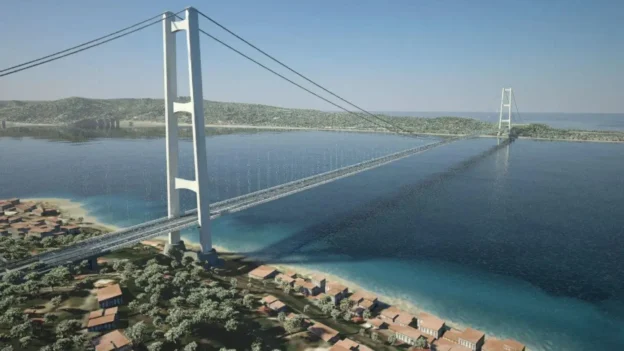The Interministerial Committee for Economic Programming and Sustainable Development (CIPESS) has granted final approval to the fixed link project between Sicily and Calabria. With an investment of $15.6 billion and a main span of 3.3 kilometers, the Messina Strait Bridge will set a world record for suspension bridges.
The company Webuild, at the head of the Eurolink consortium, announces its full readiness to start operational activities.
We are ready to start working with a team of experts on a project that will be the pride of our country.
said Pietro Salini, the company’s chief executive officer.
The project will incorporate advanced safety and maintenance technologies and will promote employment and the supply chain in Italy.
What will the Messina Strait Bridge be like?
The approved design calls for a 3.3 km main span supported by two 400-meter-high towers. The platform will include double railroad track and three lanes in each direction for vehicular traffic, meeting the highest international standards.
It is the longest suspension bridge in the world. Source: Webuild S.p.A.
Likewise, the expected capacity is up to 200 trains per day and a flow of 6,000 vehicles per hour. The complex will be equipped with state-of-the-art monitoring and maintenance systems to guarantee its operation in an area of high seismic activity.
Possible opening date
The reference schedule establishes the opening between 2032 and 2033, subject to obtaining technical and environmental authorizations. There are still procedures before the Court of Accounts, environmental control agencies, and consultation processes with local communities.
The bridge will be part of a comprehensive program that includes more than 40 kilometers of new roads roads and railway lines, viaducts, tunnels and a multifunctional center. The infrastructure will connect to the Palermo-Catania-Messina railway network and the future Salerno-Reggio Calabria high-speed line.
The execution of the project will have a significant economic impact on southern Italy, with the creation of formal employment and training programs in local technical centers. Webuild expects to mobilize up to 95,000 people and more than 17,500 suppliers during the development of the project.
The project continues to generate debate about its cost, environmental impact and urban design. Some sectors call for prioritizing investments in public services and warn about the consumption of resources such as water during construction. Transparency and risk management will be key factors in maintaining public confidence.
Source and photo: Webuild

